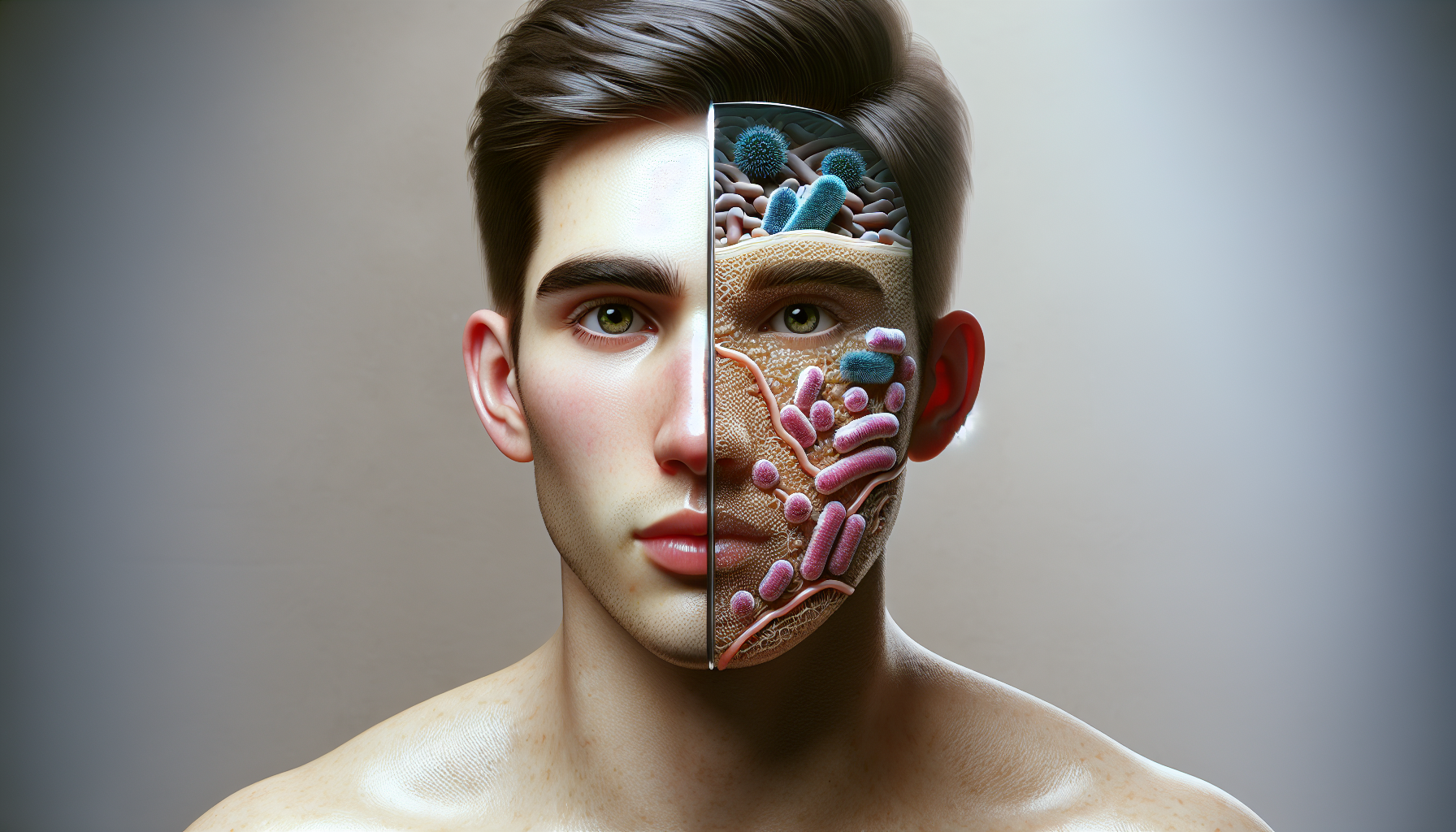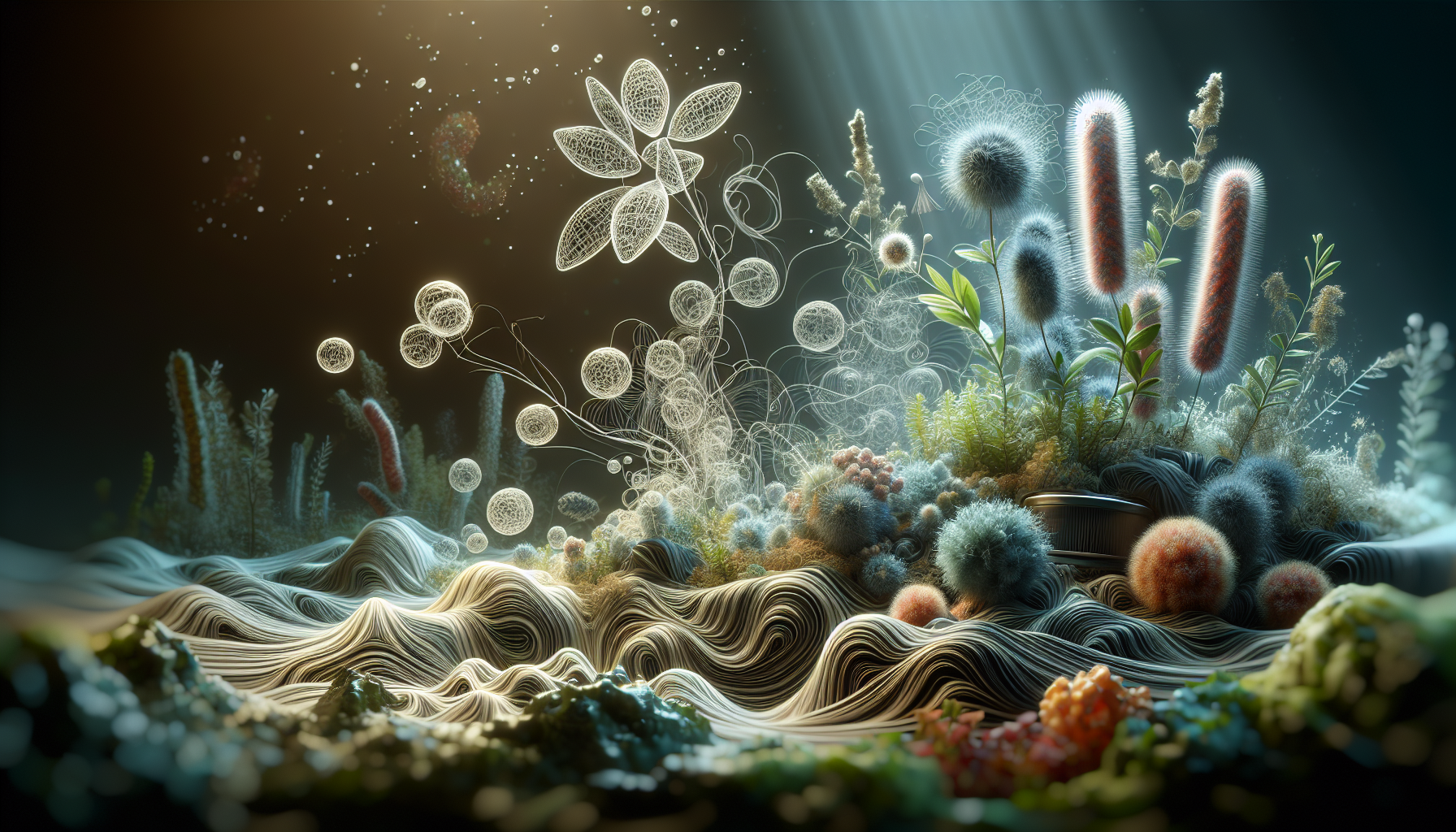In the intricate tapestry of science and technology, every so often, a thread emerges that has the potential to weave itself into the very fabric of our future, altering the way we perceive and interact with the world around us. One such revolutionary thread is the burgeoning field of DNA-based light control. Imagine a future where the manipulation of light is no longer confined to traditional methods and materials, but instead, harnesses the biological intricacies of DNA. This isn’t the realm of science fiction, but rather, a vivid and promising frontier of scientific exploration. At the intersection of biology, chemistry, and physics, DNA-based light control offers not only a novel approach to illumination but also a sustainable, efficient, and potentially transformative solution to some of the most pressing challenges we face today. 🌟
The promise of DNA-based light control lies in its ability to seamlessly integrate with natural processes, offering a harmonious blend of technology and biology. At its core, this innovation involves the use of DNA molecules as frameworks to control and manipulate light with unprecedented precision. The applications are vast and varied, spanning from more efficient solar energy conversion and advanced medical imaging techniques to innovative lighting systems and even data storage solutions. This intricate dance of photons and nucleotides is paving the way for technologies that could redefine sustainability and efficiency in numerous fields. As we delve deeper into the potential of this technology, we will explore how DNA, the very blueprint of life, is being repurposed to lead us towards a brighter, more sustainable future.
The Science Behind DNA-Based Light Control
At the core of DNA-based light control lies a profound understanding of both genetics and photonics. DNA, the blueprint of life, is known for its role in encoding genetic information. However, recent advancements have unveiled its potential as a structural component in nanoscale devices. The ability to manipulate DNA sequences to respond to light opens up a plethora of applications, ranging from medical diagnostics to environmental monitoring. By harnessing the unique properties of DNA, scientists can engineer light-sensitive systems that offer precise control and high specificity.
One of the key elements in DNA-based light control is the use of photoresponsive molecules. These molecules, when incorporated into DNA structures, can change their configuration upon exposure to specific wavelengths of light. This property allows for the modulation of various biological and chemical processes. For instance, in a medical context, DNA-based systems can be designed to release therapeutic agents in response to light, offering targeted treatment with minimal side effects.
Furthermore, the interdisciplinary nature of this field brings together biologists, chemists, and physicists to explore the vast possibilities of DNA photonics. The integration of DNA with light-sensitive components not only enhances the functionality of these systems but also paves the way for the development of novel technologies. The synergy between the precision of genetic manipulation and the versatility of light control holds promise for groundbreaking innovations across multiple domains.
Applications in Medicine and Biotechnology
The medical field stands to benefit immensely from DNA-based light control. One promising application is in the realm of cancer treatment. Traditional chemotherapy, while effective, often comes with severe side effects due to its lack of specificity. DNA-based light-controlled systems can be engineered to deliver drugs directly to tumor cells, minimizing collateral damage to healthy tissues. By utilizing light as a trigger, these systems offer on-demand activation, allowing for precise temporal and spatial control over drug release.
In the realm of diagnostics, DNA-based light control can revolutionize the detection of diseases. Fluorescent probes, which change their emission properties in response to light, can be attached to DNA sequences that target specific biomarkers. This approach enables the rapid and accurate detection of diseases at their nascent stages, facilitating timely intervention. Additionally, these systems can be adapted to monitor environmental factors, providing real-time data on pollution levels and ecosystem health.
Beyond diagnostics and therapeutics, DNA-based light control also finds applications in synthetic biology. By designing light-responsive genetic circuits, researchers can control gene expression with high precision. This capability is crucial for developing engineered organisms that can perform specific tasks, such as bioremediation or the production of valuable compounds. The use of light as an external control mechanism ensures that these processes can be tightly regulated, enhancing the efficiency and safety of biotechnological applications.
Environmental and Industrial Implications
The potential of DNA-based light control extends beyond healthcare into environmental and industrial sectors. In environmental monitoring, DNA-based sensors offer an innovative solution for detecting pollutants and monitoring ecological changes. These sensors can be designed to respond to specific environmental triggers, such as the presence of heavy metals or changes in pH levels. By integrating light control, these systems provide real-time data with high accuracy, enabling prompt responses to environmental threats.
In the industrial arena, DNA-based light control can enhance the efficiency of manufacturing processes. For example, in the field of materials science, light-controlled DNA structures can be used to fabricate nanoscale devices with precise features. This capability is particularly valuable in the production of advanced electronic components, where even the slightest deviation can impact performance. Moreover, the use of DNA as a building block offers a sustainable alternative to traditional materials, reducing the environmental footprint of industrial activities.
Another promising application is in the realm of biofuels. DNA-based systems can be engineered to optimize the production of biofuels by microorganisms. By utilizing light to control metabolic pathways, researchers can enhance the yield and quality of biofuels, making them a more viable alternative to fossil fuels. This approach not only supports the transition to renewable energy sources but also contributes to reducing greenhouse gas emissions.
Challenges and Future Directions
While the potential of DNA-based light control is vast, several challenges need to be addressed to fully realize its benefits. One major challenge is the stability of DNA-based systems under physiological conditions. DNA is inherently susceptible to degradation by nucleases, which can compromise the functionality of these systems. Researchers are actively exploring strategies to enhance the stability of DNA structures, such as chemical modifications and the use of protective coatings.
Another challenge is the precise delivery of light to the target site. In biological systems, the delivery of light can be impeded by tissue absorption and scattering. Advances in optical technologies, such as the development of near-infrared light sources and advanced imaging techniques, are critical for overcoming these obstacles. By improving the efficiency of light delivery, researchers can enhance the performance of DNA-based systems in vivo.
Looking ahead, the integration of artificial intelligence and machine learning with DNA-based light control presents exciting opportunities. By leveraging AI algorithms, researchers can optimize the design and function of these systems, accelerating the discovery of new applications. Furthermore, the development of portable and cost-effective devices will facilitate the widespread adoption of DNA-based technologies, bringing their benefits to a broader audience.
| Aspect | Traditional Methods | DNA-Based Light Control |
|---|---|---|
| Specificity | Limited | High |
| Temporal Control | Restricted | Precise |
| Environmental Impact | High | Low |
| Cost | Variable | Potentially Lower |
Check out this video to dive deeper into the wonders of DNA-based light control: DNA Light Control Explained – Science Channel
As researchers continue to unlock the potential of DNA-based light control, the future holds promise for even more transformative applications. By addressing current challenges and harnessing technological advancements, DNA-based light control is poised to illuminate a brighter future, reshaping industries and enhancing the quality of life. Stay tuned for the latest developments in this exciting field! ✨

Conclusion
In conclusion, the exploration of DNA-based light control technology represents a remarkable confluence of biology and photonics, unlocking unprecedented possibilities for both scientific advancement and practical applications. Throughout this article, we have delved into the fascinating world where DNA, the fundamental blueprint of life, is harnessed to manipulate light, leading to transformative innovations across various fields.
At the core of this technology is the unique ability of DNA to serve as a programmable material, its structure allowing for precise control over the behavior of light. This characteristic makes DNA an ideal candidate for the development of sophisticated systems that require intricate manipulation of light at the molecular level. By employing techniques such as DNA origami, scientists can construct nanoscale structures that precisely guide light, enabling breakthroughs in areas ranging from bioimaging to information storage.
One of the key points discussed is the potential of DNA-based light control in medical diagnostics and therapeutics. The precision with which DNA can be programmed to interact with light opens up new avenues for targeted drug delivery and minimally invasive diagnostic procedures. By attaching specific DNA sequences to therapeutic agents or imaging molecules, researchers can achieve unprecedented levels of accuracy in targeting diseased cells, thus minimizing side effects and improving patient outcomes. This capability holds immense promise for the future of personalized medicine, where treatments are tailored to the genetic makeup of individual patients.
Moreover, the integration of DNA-based light control into renewable energy technologies was highlighted as a pivotal step toward a sustainable future. By optimizing the light absorption and energy conversion processes in solar cells, DNA structures can significantly enhance their efficiency, contributing to the global transition to cleaner energy sources. This advancement not only addresses the pressing need for sustainable energy solutions but also underscores the versatility of DNA as a functional material in diverse technological applications.
In the realm of data storage, DNA’s capacity to store vast amounts of information in an extraordinarily compact form presents a revolutionary approach to overcoming the limitations of traditional storage media. By encoding data into DNA sequences and utilizing light to read and write information, scientists are paving the way for the development of durable, high-density storage systems that could meet the growing demands of the digital age. This innovation not only holds promise for data preservation but also offers a sustainable alternative to energy-intensive data centers.
The intersection of DNA technology and light control also extends to environmental monitoring and remediation. By engineering DNA-based sensors that respond to specific light wavelengths, researchers can develop highly sensitive and selective tools for detecting pollutants and monitoring environmental changes. This capability is vital for addressing global challenges such as climate change and pollution, where timely and accurate data is essential for informed decision-making and effective intervention strategies.
Despite the significant progress made in this field, challenges remain, particularly in the areas of scalability, cost-effectiveness, and integration into existing technologies. Continued research and collaboration among scientists, engineers, and policymakers are essential to overcoming these hurdles and fully realizing the potential of DNA-based light control. By fostering a multidisciplinary approach, we can accelerate the translation of laboratory innovations into real-world applications that benefit society as a whole.
The importance of DNA-based light control technology cannot be overstated. It represents a paradigm shift in how we understand and utilize the natural world, offering solutions to some of the most pressing challenges of our time. Whether it is improving healthcare outcomes, advancing renewable energy, enhancing data storage capabilities, or safeguarding the environment, the applications of this technology are as diverse as they are impactful.
As we look to the future, it is crucial to continue supporting research and innovation in this exciting field. By doing so, we not only unlock new possibilities but also inspire the next generation of scientists and innovators to explore the untapped potential of DNA-based technologies. We encourage readers to engage with this topic further, whether by sharing this article, discussing its implications with peers, or considering how they might apply these concepts in their own fields of interest.
In closing, the journey to illuminate a brighter future through DNA-based light control is just beginning. As we harness the power of nature’s blueprint, we stand on the brink of discoveries that could transform our world for the better. Let’s embrace this potential, celebrate the synergy of biology and technology, and work together to create a future where the brilliance of our innovations shines as brightly as the light we now have the power to control. 🌟
—
**References and Further Reading:**
1. National Center for Biotechnology Information. “DNA Origami: Folding DNA to Create Nanoscale Shapes and Patterns.” NCBI
2. Nature Reviews. “The Future of DNA Data Storage.” Nature
3. Science Daily. “DNA-Based Nanosensors for Environmental Monitoring.” Science Daily
Toni Santos is a visual explorer and microscopic storyteller who delves into the hidden aesthetics of microbial life. Through a fusion of scientific curiosity and artistic insight, Toni transforms the overlooked world of bacteria, fungi, and cellular forms into mesmerizing visual narratives—revealing the elegance, symmetry, and chaos that thrive at microscopic scales.
Rooted in a fascination with life forms too small to see yet too intricate to ignore, Toni’s work captures the bizarre beauty of microbial colonies, biofilms, and spore patterns. These images aren’t just representations—they are celebrations of the artistic intelligence encoded in nature’s tiniest architects.
With a background in visual design and bio-inspiration, Toni merges scientific imaging techniques with creative expression, transforming petri dish cultures, fluorescence microscopy, and microbial textures into works that provoke both wonder and contemplation.
As the creative force behind Vizovex, Toni offers curated visual studies, microbial-inspired designs, and essays that bridge art and microbiology—inviting viewers to reimagine what beauty means at the edge of perception.
His work is a tribute to:
The hidden geometries of living systems
The surprising elegance of microbial growth
The role of micro-life in shaping visual culture
Whether you’re a scientist, artist, or simply curious about the unseen world that sustains us, Toni opens a window into a universe where life writes poetry in colonies and patterns, one microbe, one frame, one breathtaking detail at a time.





